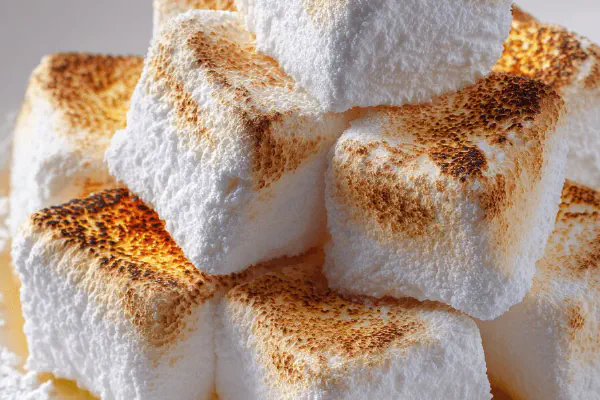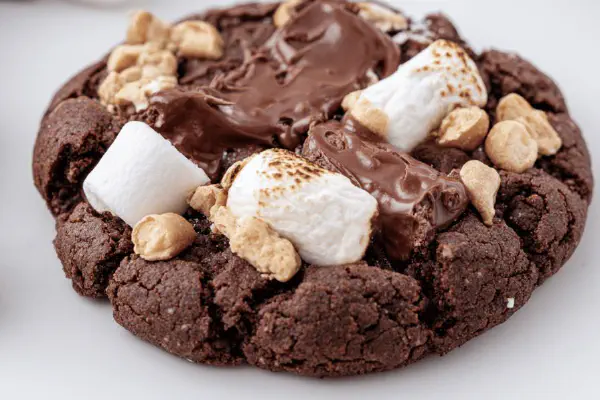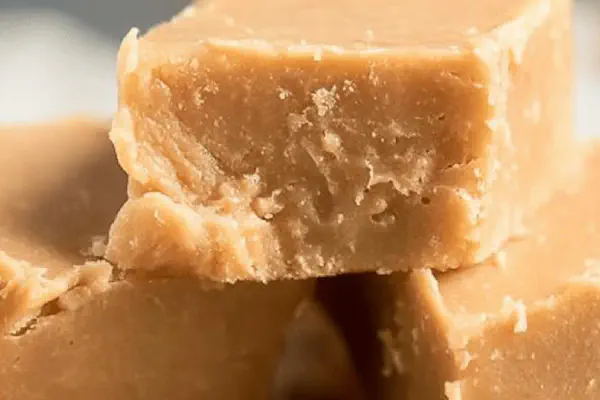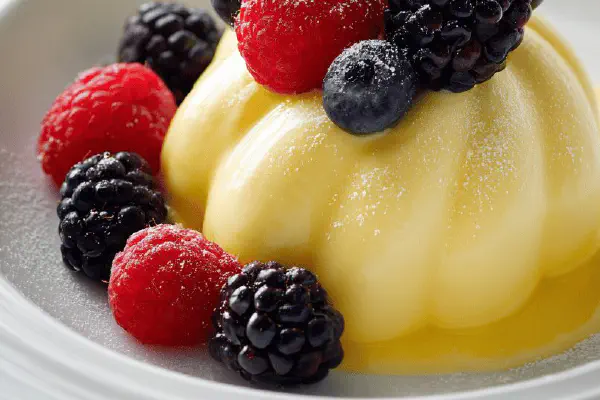Vanilla Marshmallow Remix

By Emma
Certified Culinary Professional
Ingredients
- 80 ml (about 1/3 cup) powdered sugar
- 80 ml (about 1/3 cup) arrowroot starch
- 140 ml (about 2/3 cup) cold water
- Seeds scraped from ½ vanilla bean pod
- 15 ml (3 tsp) powdered gelatin
- 200 ml (about 1 cup) granulated sugar
- 150 ml (about ⅔ cup) honey, light floral
- Optional pinch of salt
About the ingredients
Method
Preparation
- Line an 8-inch square mold with plastic wrap, spray very lightly with neutral oil. Set aside.
Gelatin Mix
- In a small pot, combine cold water and vanilla seeds. Sprinkle gelatin powder evenly over. Let bloom 7 minutes. Heat gently over low, stirring constantly. Don't boil. Watch for gelatin dissolve into thick syrup.
Sweet Syrup
- Add granulated sugar and honey to gelatin mixture. Stir until grains vanish and syrup reaches soft ball stage between 110–115°C (230–240°F). No thermometer? Watch for syrup thickening, swirling slow down, and glossy shine.
Whipping
- Pour hot syrup into a large bowl. Using electric mixer at medium-high speed, whip for about 13 minutes until mixture is thick, forms soft peaks that hold shape but gently droop. Peaks dry out just slightly but still shiny. Longer whipping traps air, improves fluff.
Setting
- Spoon the marshmallow foam into prepared mold. Smooth top quickly; it starts to set fast. Tap mold to remove large air bubbles. Chill in fridge about 2hr 15min until firm yet springy on touch.
Dust and Cut
- Mix powdered sugar and arrowroot starch, sift to eliminate lumps. Spread some on countertop and knife blade. Turn marshmallow slab onto sugared surface. Peel off plastic carefully. Cut into 25 squares with oiled knife to prevent sticking. Toss each cube lightly in the sugar-starch mix until coated well. Use sieve to shake off excess.
Torch Finish
- If feeling adventurous, caramelize top surfaces with a small kitchen torch. Watch carefully; marshmallow should brown lightly with caramel notes, not melt entirely. Quick, gentle passes around edges bring cracked-but-chewy dimension. Serve immediately or store loosely covered to avoid moisture trap.
Cooking tips
Chef's notes
- 💡 Gelatin blooming crucial — sprinkle evenly on cold water with vanilla seeds. Skip this, rubbery chew invades. Heat low, no boil. Watch syrup thickens slowly, feels like lava dropping. Syrup temp hits soft ball stage, done. Don’t rush, whisk slower if honey slows whip — patience wins fluffy peaks.
- 💡 Line mold well, plastic wrap crucial but oil spray prevents stick. Oil light, no puddles or marshmallow fixes to pan. Spread foam fast — it sets quick, tap mold to shake out big air pockets. Longer whip traps air, volume grows. Use medium-high mixer speed, 13 minutes roughly. Watch peaks softly hold, glossy but droopy edges.
- 💡 Dusting mix sifts well, arrowroot swaps cornstarch here — less grit, cleaner coating. Spread sugar-starch on surface and knife blade to slice clean. Oiled blade cuts neat cubes, no dry crumbs or gummy stick. Toss cut pieces right away, sieve to shake off excess powder, controls messy sticky hands. Check humidity — powder clumps if moist.
- 💡 Torch finish adds browned notes, Maillard reaction not just caramel burn. Move torch quick, keep edges cracked-chewy, don’t melt top fully or lose bite. Avoid overheating or marshmallows collapse soft. Use torch passes sparingly, small kitchen type works best. Watch aroma, light caramel scent cues done. Open container storage avoids moisture traps.
- 💡 Honey swaps corn syrup — syrup viscosity drops; watch whipping speed drop too. Agar agar mixed with gelatin firms bite, better heat resistance. Vanilla bean seeds give speckled look, fragrant nose. Optional salt pinch helps sweetness pop without saltiness, old candy hack. Adjust ingredient volumes for bigger bowls — whipping efficiency changes, volume loss risks.
Common questions
How to know syrup reached soft ball?
Visual cues here. Syrup thickens, swirls slow down, glossy shine appears. No thermometer? Watch closely. Feel thick syrup drop like slow lava. Not too runny, not hard crack stage. Bubble size smaller, not popping rapidly. Sticky but flow slow.
Gelatin blooming is it really necessary?
Yes. Cold water soak blooms gelatin powder. Skipping results rubbery texture, no fluff. Gentle heat dissolves but no boil. Boiling breaks gelatin, ruins hold. Agar agar addition helps shape but gelatin must hydrate right for bounce and softness.
Why marshmallow sticks when cutting?
Dust mix poorly sifted, or mold left sticky. Lack of oil spray on knife also culprit. Use arrowroot starch for drier coating, sieve powder before tossing. Slice on sugared surface with blade lightly oiled, cuts clean. Cutting too soon also sticky mess.
Best way to store marshmallows?
Airtight container loosely covered best. Avoid moisture condensation, or cubes get soggy. Fridge if hot climate but wrap well to prevent drying out. Room temp fine short term. Sugar-starch coating slows stick but not forever barrier.



